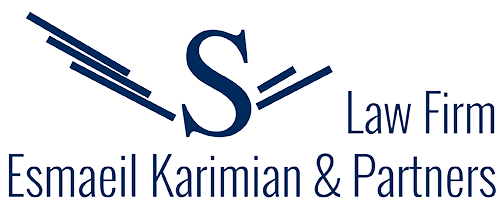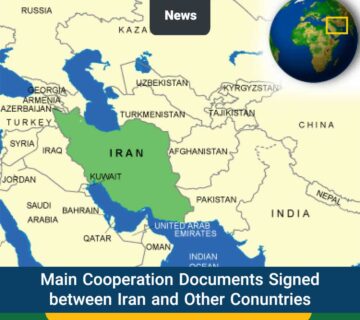In this article you will read:
Equity to Debt Ratios
One of the most important elements which shapes the financial structure of an investment contract such as BOT is equity to debt ratios.
The project company, as a special purpose vehicle is committed to provide the financial resources needed to build and operate the project through the available financial instruments.
The first step in this direction is to determine the ratio of shareholders investment to monetary facilities obtained from banks or financial institutions, or amounts obtained from the issuance of bonds in the market.
In addition to these resources, the project company may apply for subordinated loans.
Depending on the size, turnover, and risks of the projects, the level of investor participation varies.
Thus, in projects that have a good economic outlook, turnover and low risks, the ratio is reduced to ten percent and loans to ninety percent; By changing this balance, this ratio will fluctuate up to forty percent against sixty percent of the loan.
The lower equity to loan ratio, the more favorable it is from the shareholders’ point of view. Since the equity finance for various reasons, such as delay in its repayment and priority of repayment of the loan, brings more risks to shareholders, it requires a higher rate of return; this increases the cost of project implementation though.
You might also be interested in :
On the contrary, lenders are always concerned about the level of shareholders participation; from the lenders’ point of view, there is a direct relationship between this level and shareholder’s commitment to project success; Therefore, they want the sponsors’ investment to be at a level that ensure the project’s success.
Typically, in BOT contracts, equity to debt ratios are stated because an effective and favorable financial structure plays a key role in the success of the project and the public sector seeks to ensure compliance with this ratio.
For example, equity to debt ratios is stated in the “Energy Conversion Agreement” (ECA) of the “South Esfahan Combined Cycle Power Plant” project as follow:

“11.1 The Company shall arrange financing for the Total Costs (based on approximately 70% by debt and 30% by equity including subordinated loan) provided in Article 10 (Total costs). The Company shall be liable for the repayment of all loans and payment of all obligations owing to lenders used for financing the Total Costs.”
One of the key points in the financial structure of the BOT project is to anticipate the conditions for additional financing.
In some cases, with the occurrence of a force majeure event, not only the project is delayed (delay in completing the construction phase or delay in starting the operation of the project), but also additional costs are imposed on it.
Therefore, it is necessary to incorporate a provision in the contract regarding additional financing, the extension of the contract period and the imposition of additional costs and the risk of delay in the implementation of the project to the project company if these costs or delays are due to the fault or negligence of the company.
For example, additional financing is stated in the Energy conversion agreement (ECA) of the “South Esfahan Combined Cycle Power Plant” project as follow:
“11.3 Should delay and/or cost increases by any event of Force Majeure, then the Authorisation Period, the Construction Period, the Commercial Operation Period, the Milestones Schedule and the fees shall be mutually agreed and adjusted accordingly to recover amount utilized under section 11.2 (b).”

Obviously, in case of termination of the contract due to a force majeure event, the above issues will no longer be raised and the relationships between the parties will be determined in accordance with the conditions related to the termination of the contract.
It should be noted that if the force majeure has taken place outside Iran, first, the project company will not be able to terminate the contract according to Article (4-24) (even if the force majeure lasts more than 180 days) and will still be required to fulfill its obligations.
Second, after presenting the evidence and positive documents for the occurrence of the force majeure by the project company, by extending the contract, Tavanir (a subsidiary of Ministry of Power of Iran) will grant a reasonable period of time to fulfill the obligations to the said company.
If there is a need to provide additional funding due to delays in the project or the imposition of additional costs due to the fault of the project company or its breach of contractual obligations, not only construction or operation periods will not be extended, but also capacity fee and energy fee will not be affected or increased and all the consequences of such fault or breach of contractual obligations will be imposed on the project company. For example based on mentioned ECA:
“11.5 Any additional financing required to cover delays or cost increases arising out of sole negligence of the Company or default of the Company, shall be the responsibility of the Company and shall not be reflected in fees. In such case, the Construction Period, the Commercial Operation Period and Authorisation period shall not be extended except as specifically set forth in Article 24 (Termination).”

Factors affecting Equity to Debt Ratios
Several factors affect the equity to debt ratios in in project finance such as BOT projects, some of which are discussed below:
1. One of the factors is the estimates made about the project’s turnover and future revenue stream. If the project is exposed to market risks and the supply of products and revenue depends on market conditions, lenders make lending to the project subject to the more participation of sponsors in the form of equity finance so that market risks are properly shared between the parties.
2. Conversely, if the project is contract-based and buyers (whether from public or private sectors) commit to purchasing the product or service produced by the project based on offtake agreement, in this case, due to the assurance of the minimum revenue flow and turnover of the project in the future, increasing the loan ratio will be welcomed by lenders.
3. For example, based on a “take or pay contract”, the buyer is obliged to pay the agreed contract amount for the product, even if he does not purchase the products.
4. Due to delays in recovery of equity of investors and lenders’ priority to receive the principal and interest of their loans, investors typically charge higher rates of return than other financiers, which adds to the cost of project implementation for the public sector. For this reason, the host government seeks to strike a reasonable balance between the proportions of loans in the project so that the demands of investors do not overshadow the economic viability of the project for the public sector.
5. Another effective factor attributed to equity to debt ratios is the level of development of the country where the project is implemented; Thus, if this country is one of the developing countries with an emerging economy, this will lead to an increase in the ratio of equity in comparison to debt; Because lenders, in granting financial facilities, analyze the various risks of the country where the project is implemented based on the level of its development.
6. One of the conditions precedent of a host government in order to award the concession to the project company may be a certain level of investment by the project sponsors. This is to ensure the commitment of the sponsors to the success of the project. Besides, according to the laws of the host government, the investment in the project company may necessarily be made with the participation of local investors, which also affects the equity to debt ratios.
7. In some countries, according to the relevant laws and regulations, a certain percentage of financial resources for the implementation of the project must necessarily come from the investment (equity finance) of the project sponsors.
Our team is composed of highly skilled and versatile lawyers who combine practical experience and academic knowledge of their field. Most of our practitioners have worked in different professional environments, often outside their home jurisdiction.





No comment